The Garden 2015 – 2016
I kind of let the garden report slide for a couple of years. Apologies.
Below is where things stood on Christmas Eve 2015. As you can see, I began the project of converting the grass paths to wood chips as winter began. I made one conscious blunder: I lay down high-quality landscape cloth directly over the grass. Ideally, I should have dug out the turf, but if you have any idea what a hard job that is, you’ll understand why I took the easy way out. Bottom line is that some grasses and weeds poked up through the landscape cloth and chips the very first year of the new regime. I also aimed to deconstruct the raised beds in each corner quadrant and combine them to make four larger planting beds. You’ll see….
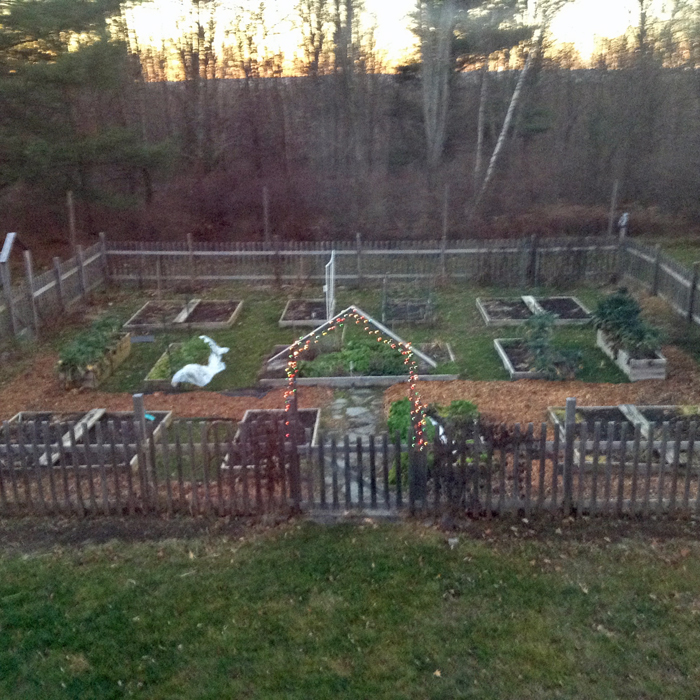
But first a look back to the 2015 season: Here’s how things stood in May 2015. This arrangement was producing nicely, but the wooden frames around the beds were showing signs of rot — they were not made of chemically treated lumber — and I began to get annoyed with mowing the grass paths.

The perennials were getting pretty well established. Here’s the rhubarb and Iris in May.
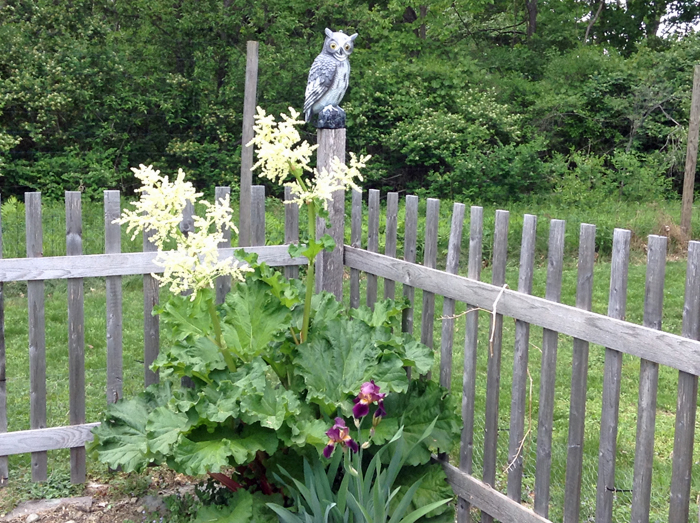
I planted a new blueberry bed. The older bed was not thriving and I don’t know why. I put down plenty of acidic material (peat moss) as a mulch around them and supplemented that with sulfur. But the berries did not thrive.

I pruned the raspberries pretty severely. They ended up doing great. Lots and lots of berries in 2015.
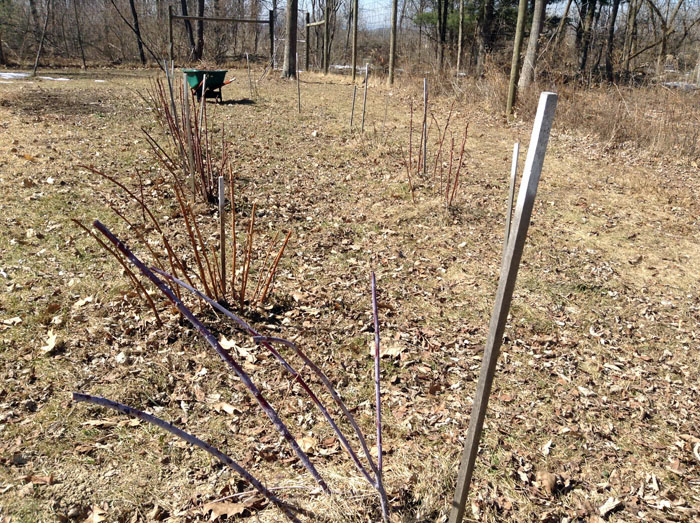
Okay, that was then.
Let’s move on to 2016:
I combined the 8 X 8 and 4 X 8 beds by filling in the space in between.

Then I removed the wood frames. The beds are still raised. I continue to put new compost on them along with some fireplace ash.
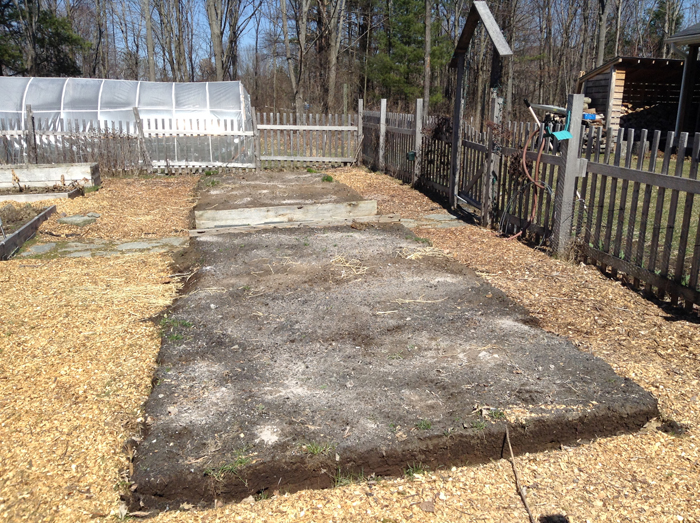
Here’s the scheme completed in April. I like the greater simplicity. The center-end beds are still a work-in-progress. I’m going to keep them in the boxes one more year and then combine them too like the quadrants. The center is an herb bed and will remain, though I replaced the wood edging with stones.
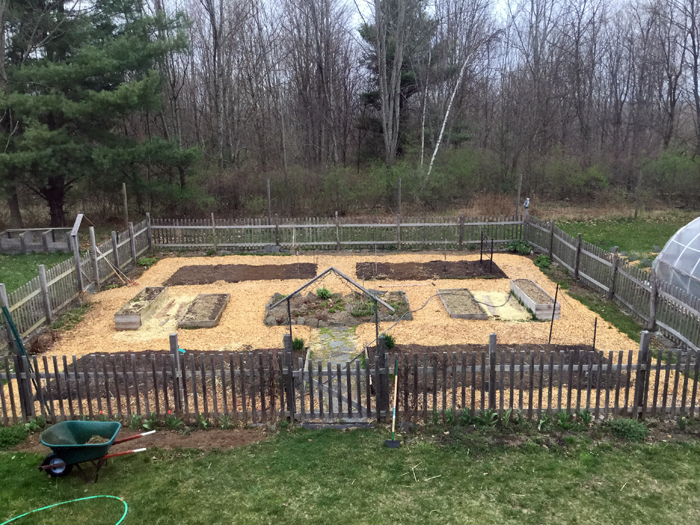
Here we are getting all planted up in May. Lettuces and peas in.
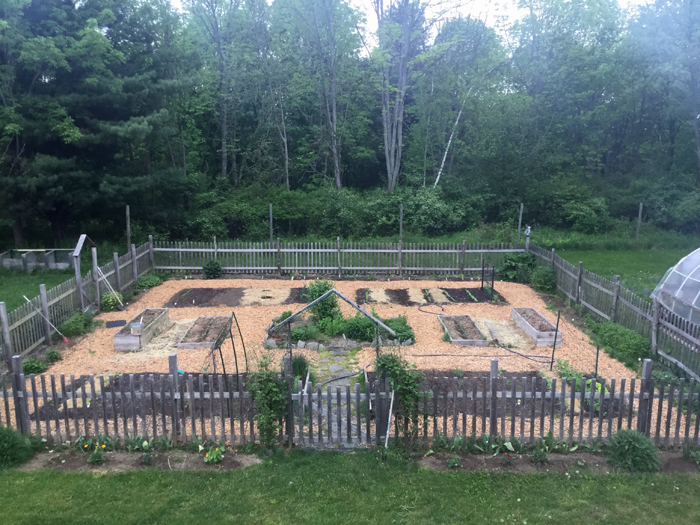
Here we are a month later. Foxgloves blooming in herb bed, center. The tall plant behind them is lovage, stately and aromatic, with an intense celery scent. I planted some really special hybrid lilies around the back perrenial strip.

The two year old plum trees blossomed heavily. But after a very mild winter, we got hit by a freak May frost at the critical fruit-setting moment and all my fruit trees were affected.
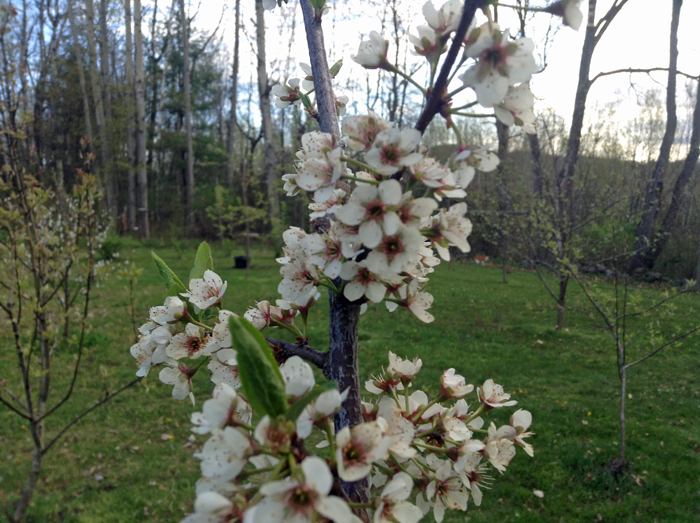
This plum is literally the only fruit that grew on my 30-odd fruit trees. Not a single other fruit survived the frost… apples, pears, cherries, peaches. You begin to realize how fragile and perilous food cultivation really is. Most of my friends in the county reported the same crop failure.

My tepee for growing hops collapsed in the winter of 2015. I built a new one and braced the shit out of it this time.
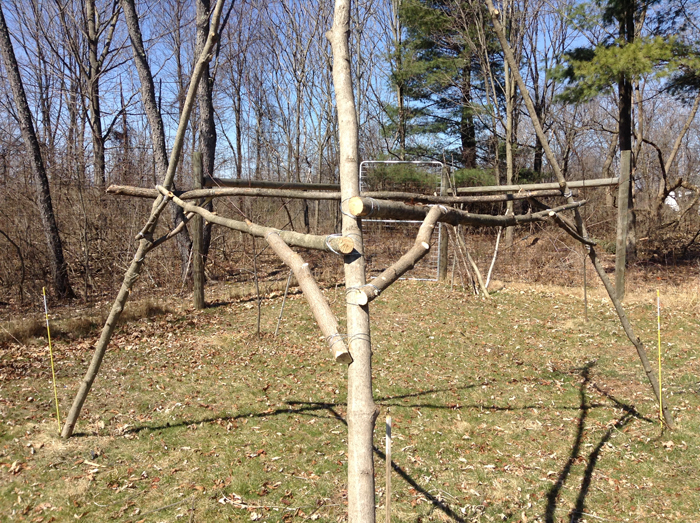
The perennial beds came in nicely, but I’m getting a little tired of sunflowers falling over in rainstorms. I’ll go for more hollyhocks next year.
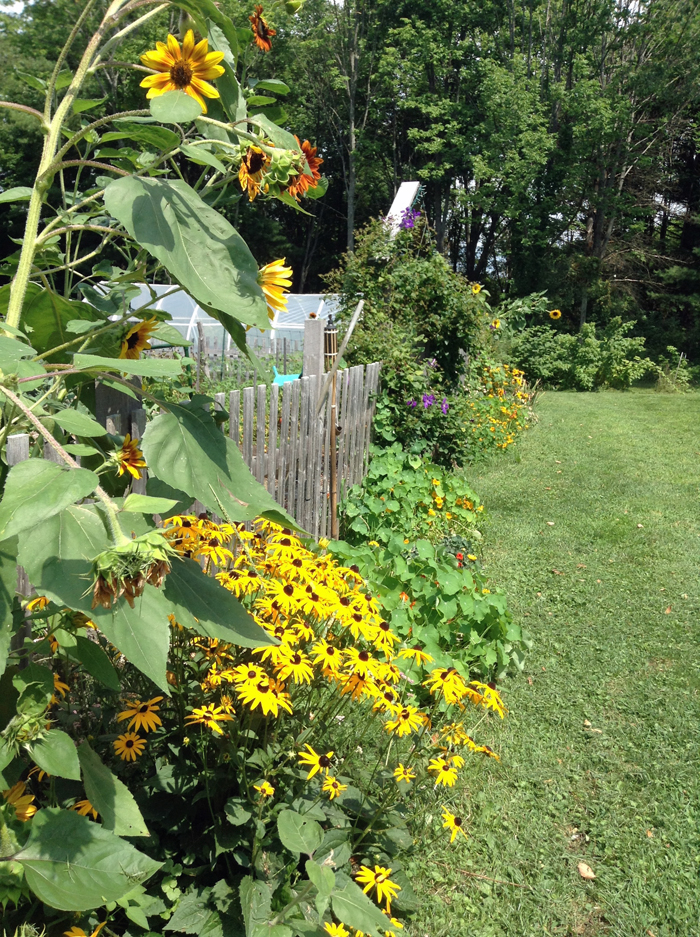
More sunflowers. See the cosmos in the background. They also blew down in heavy rain. Annoying.
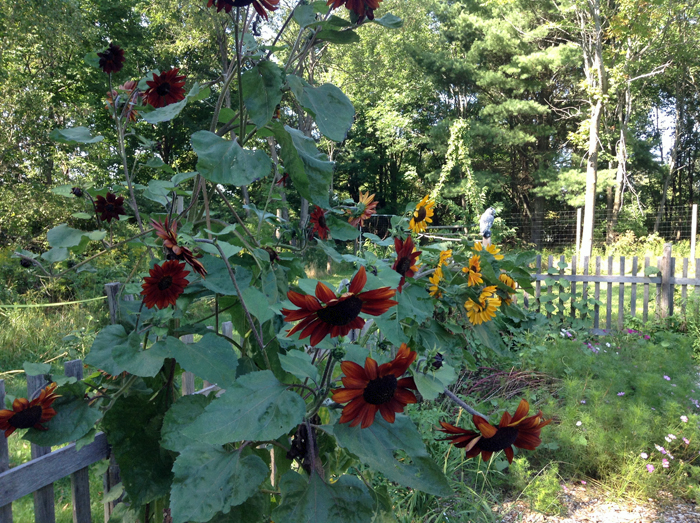
Scooter likes to sleep in the hay bin. Is there anything sweeter than a sleeping cat?
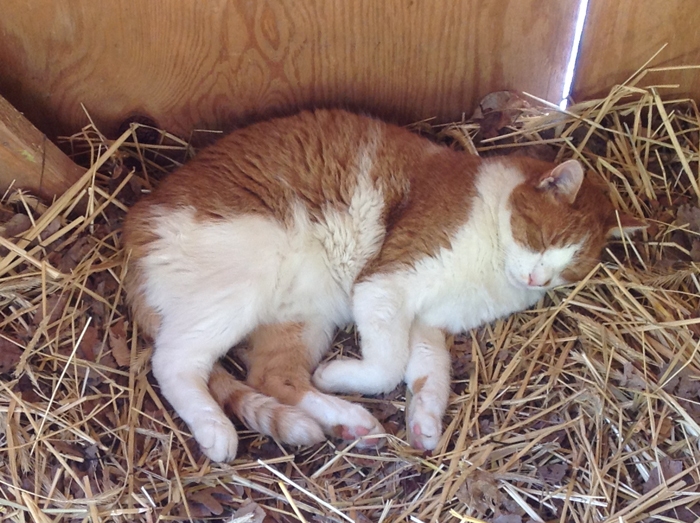
I was plagued by “volunteer” morning glories. They got into everything and helped drag down the cosmos.

This flat-leaf kale resembles a collard. This is September. In the weeks following, I was hit by some kind of cabbage caterpillar that decimated the leaves.

Lemongrass came in nicely and thrived. I harvested it in October and put a big bag of trimmed aromatic stems in the freezer. I use them as flavoring in Asian-style soup stocks. The bright flowers are portulaca, also “volunteers.”
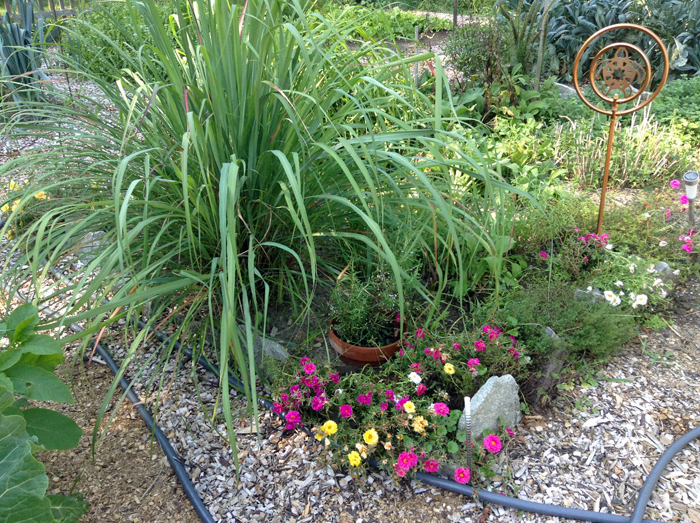
I grew a big box of soybeans and enjoyed a couple of weeks of edamame snacks. But I read some material about the effect of soy on the body — it produces an estrogenic enzyme that is not good for male humans — and I think I’ll forego them in the future.
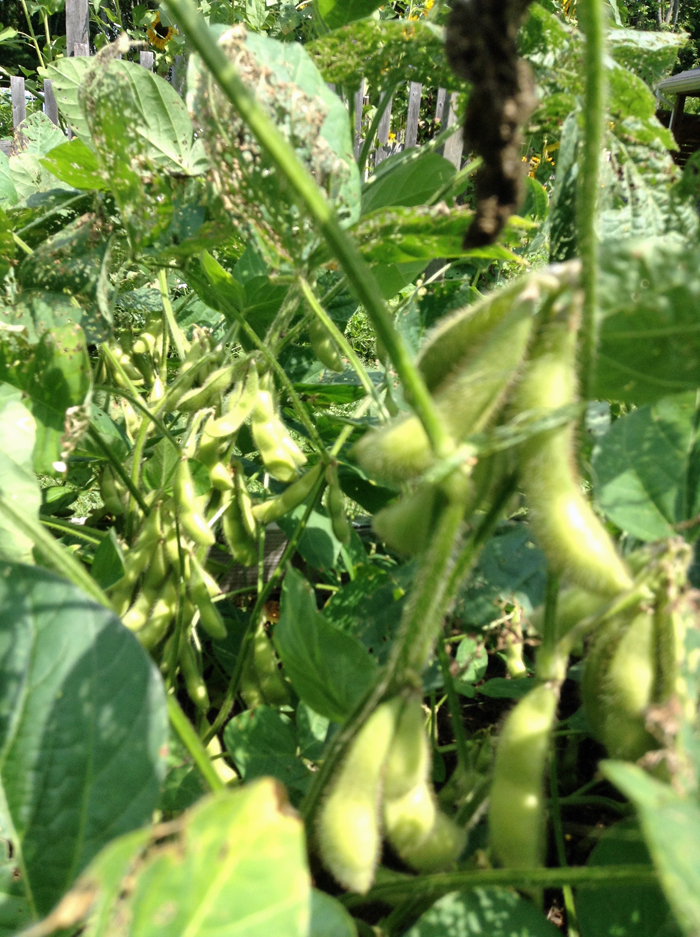
This was a bummer. I planted a “Three Sisters” patch (in the native American style): corn, beans, and squash. The squirrels climbed the cornstalks just as the cobs began to ripen, peeled back the husks ever so daintily, and nibbled all the kernels away. To add insult to injury, they also pushed over the corn stalks a few days later. Weeks after that, they chewed holes in about half the butternut squashes. A lot can go wrong in the schemes of gardeners. Eye-yi-yi….
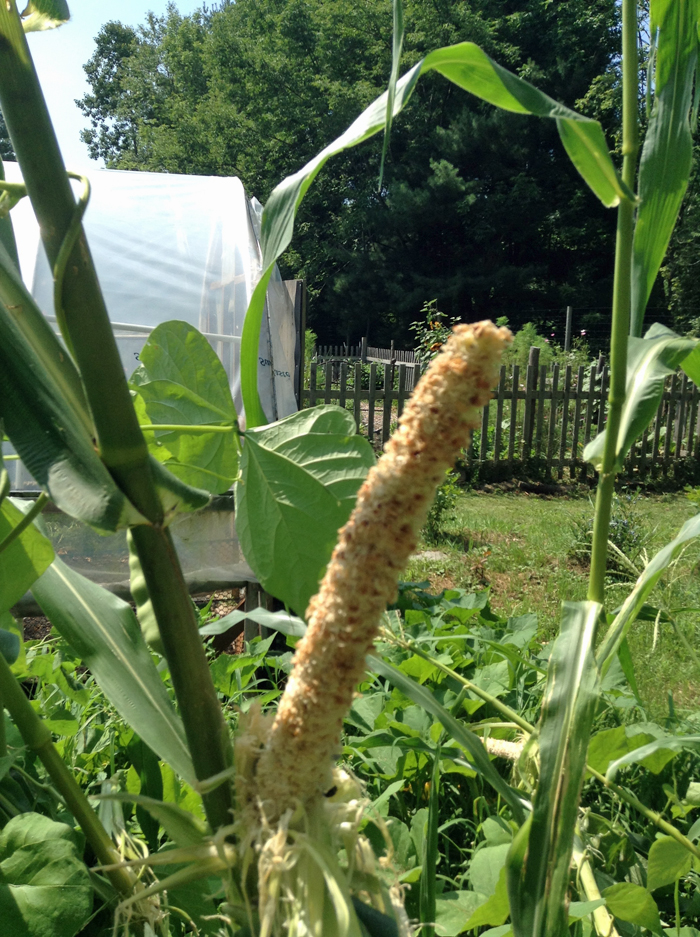
And here we are once again at the end of the season. One big corner bed all cleaned up and ready to sleep for four months.
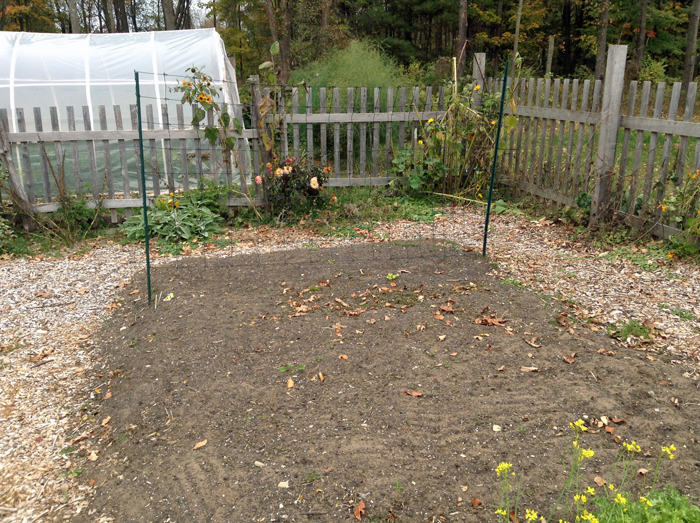
Another sad, frustrating note: in 2013, I planted two “blight-resistant” American chestnuts. Well, one of them turned out to be not so blight-resistant. The main trunk died off in April, and after that the tree struggled to send up watersprouts. I doubt they will amount to the regrowth of a regular tree… but we’ll see. I should have just planted Chinese chestnuts.

The composting operation is working splendidly. I’ve been successfully rotating this material through the bins and getting it back onto the garden beds. I’m mixing a lot of chicken bedding in. Powerful stuff. Needs to cook for a while.
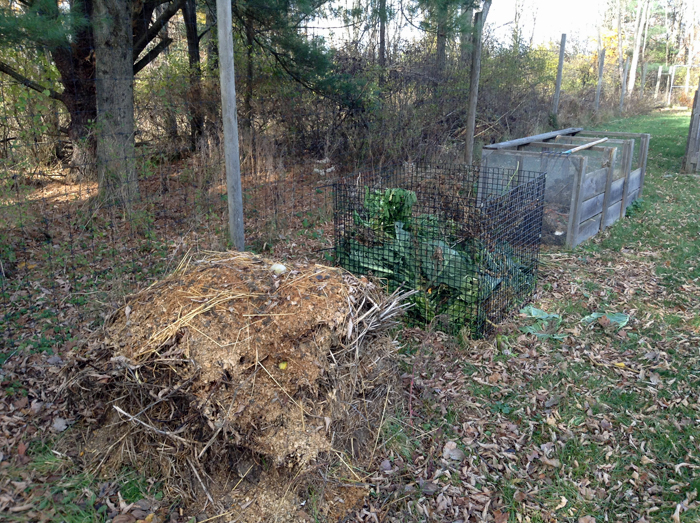
Support this website by visiting Jim’s Patreon Page!
It’s Out !
World Made By Hand (Fourth and Final)

New Interview with JHK about The Harrows of Spring
Praise for A History of the Future:
“Kunstler skewers everything from kitsch to greed, prejudice, bloodshed, and brainwashing in this wily, funny, rip-roaring, and profoundly provocative page- turner, leaving no doubt that the prescriptive yet devilishly satiric A World Made by Hand series will continue.” — Booklist

My local indie booksellers… Battenkill Books (Autographed by the Author) … or Northshire Books…
or Amazon…
Also: Published as an E-book for the first time!
The 20th Anniversary edition
With an entertaining new introduction by the author

Bargain Price $3.99
Amazon Kindle …or … Barnes & Noble Nook …or… Kobo
Support this blog by visiting Jim’s Patreon Page!


